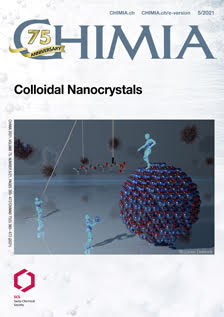An Overview of Computational Studies on Colloidal Semiconductor Nanocrystals
DOI:
https://doi.org/10.2533/chimia.2021.427PMID:
34016236Keywords:
Classical molecular dynamics, Colloidal semiconductor ncs, Chalcogenides, Density functional theory, Perovskites, PnictogenidesAbstract
In the last two decades, colloidal semiconductor nanocrystals have emerged as a phenomenal research topic due to their size-dependent optoelectronic properties and to their outstanding versatility in many technological applications. In this review, we provide an historical account of the most relevant computational works that have been carried out to understand atomistically the electronic structure of these materials, including the main requirements needed for the preparation of nanocrystal models that align well with the experiments. We further discuss how the advancement of these computational tools has affected the analysis of these nanomaterials over the years. We focus our review on the three main families of colloidal semiconductor nanocrystals: group II-VI and IV-VI metal chalcogenides, group III-V metal pnictogenides and metal halides, in particular lead-based halide perovskites. We discuss the most recent research frontiers and outline the future outlooks expected in this field from a computational perspective.Downloads
Published
2021-05-28
Issue
Section
Scientific Articles
License
Copyright (c) 2021 Roberta Pascazio, Juliette Zito, Ivan Infante

This work is licensed under a Creative Commons Attribution 4.0 International License.
How to Cite
[1]
Chimia 2021, 75, 427, DOI: 10.2533/chimia.2021.427.







